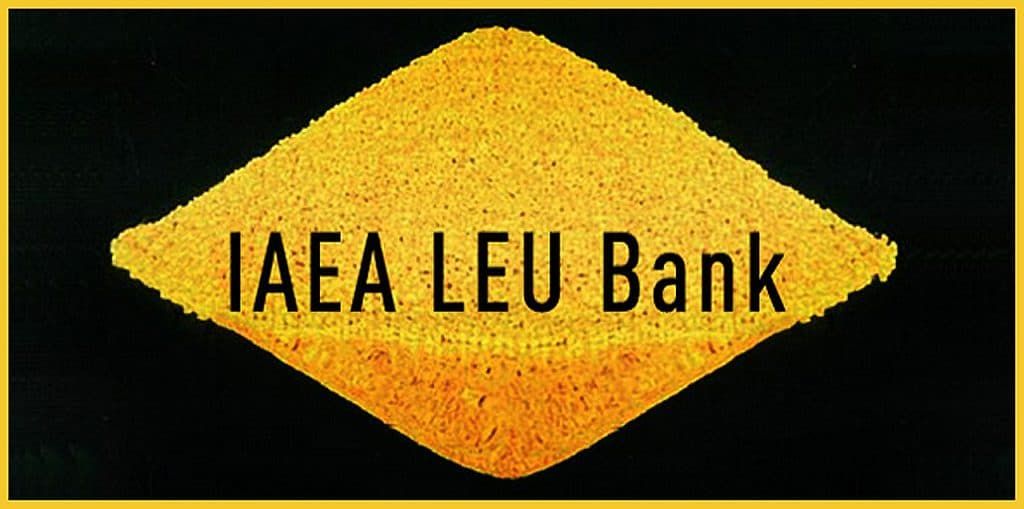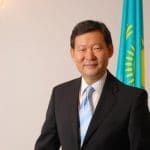Letter from Kazakhstan: Why we believe in the nuclear fuel bank
By Kairat Umarov | August 27, 2015
 IAEA LEU Fuel Bank
IAEA LEU Fuel Bank
With the US Congress soon to vote on the nuclear deal between Iran and six world powers, opinion polls suggest that the American public is divided over whether to accept it. One new factor to consider is a development that could potentially reinforce the agreement, while minimizing any incentives for Iran to pursue uranium fuel production capabilities.
On August 27, the government of Kazakhstan signed an agreement with the International Atomic Energy Agency (IAEA) to establish an international low-enriched uranium fuel bank in the country. This bank, to be located at the Ulba Metallurgical Plant in the northeastern city of Ust-Kamenogorsk, will be owned and managed by the IAEA. It will give members access to enriched nuclear fuel in cases of disruption to their own supply, thus removing the need for countries to build their own enrichment facilities, which pose a proliferation risk.
It is symbolic that among those attending the agreement signing in Astana was co-chairman of the Nuclear Threat Initiative and former US senator Sam Nunn. With financial backing from Warren Buffet, his organization played an instrumental role in turning the fuel bank concept into reality by committing $50 million to the IAEA to help create such a facility.
The timing of the agreement is no less symbolic. It was signed just two days before the United Nations International Day against Nuclear Tests, which marks the day in 1991—August 29—of the closure of the infamous Semipalatinsk nuclear test site in East Kazakhstan, where the Soviet Union conducted 456 nuclear tests.
August 29 was also the date on which the first of those tests, code named Pervaya Molniya or First Lighting, was conducted in 1949. Over 40 years, 340 underground and 116 atmospheric tests were conducted at the site, which was almost the size of New Jersey and more than five times the size of the Nevada Test Site (now the Nevada National Security Site) in the US southwest.
The last nuclear test at Semipalatinsk took place on February 12, 1989, but 26 years on, the consequences endure: More than one and a half million people in Kazakhstan have suffered early death, horrific birth defects, and lifelong physical difficulties as a result of exposure to radiation from nuclear weapon tests. Doctors have warned that the rate of genetic abnormalities in the third and fourth generation following exposure could be even greater.
This stark reality led President Nursultan Nazarbayev to unilaterally give up the fourth-largest nuclear arsenal in the world shortly after Kazakhstan became independent in 1991. The country has since consistently campaigned for an end to nuclear testing and been a staunch supporter of a number of international non-proliferation and disarmament initiatives. It was among the first to sign the Comprehensive Nuclear Test Ban Treaty in 1996, and today, five international monitoring stations—part of the world-wide global alarm system that detects nuclear explosions—are located in the country. Kazakhstan advocates for international cooperation on nuclear disarmament and non-proliferation, and along with its neighbors, was instrumental in the creation of the Central Asian Nuclear Weapons Free Zone. It fully endorses the goals of the Nuclear Security Summits, and in 2014, pledged along with 22 other nations to secure all radiological substances within its borders by 2016.
We in Kazakhstan hope that other states can learn from the grave consequences brought upon us by nuclear testing and our decision to dismantle atomic weapons. To that end, using our close diplomatic relations with Iran, we have long urged our near neighbor to follow our lead and renounce nuclear arms. In 2013, Kazakhstan hosted two rounds of the nuclear talks between Tehran and its negotiating partners, which were important in making progress towards the ultimate agreement. The final deal specifically says that Iran will have the option to sell its excess enriched uranium to the IAEA fuel bank in Kazakhstan once it becomes operational in 2017.
Kazakhstan has demonstrated that a peaceful foreign policy, openness, and cooperation—as opposed to possessing and threatening to use weapons of mass destruction—are essential to security and prosperity. It is our hope that the Iran agreement concluded in July will be fully implemented and scrupulously enforced so that it, too, can be a model for international nonproliferation cooperation.
Decades after the Semipalatinsk test site became silent, the people of Kazakhstan still bear physical and emotional scars from the testing period. Kazakhstan will never be able to reverse the devastating health, environmental, and psycho-social effects of the nuclear detonations. But what we can do is use our legacy to strengthen global nuclear security, reduce the risks associated with dissemination of sensitive fuel cycle technologies, and create a safer world. We believe that creating the nuclear fuel bank will help do that.
Together, we make the world safer.
The Bulletin elevates expert voices above the noise. But as an independent nonprofit organization, our operations depend on the support of readers like you. Help us continue to deliver quality journalism that holds leaders accountable. Your support of our work at any level is important. In return, we promise our coverage will be understandable, influential, vigilant, solution-oriented, and fair-minded. Together we can make a difference.
Topics: Nuclear Energy, Nuclear Weapons, Opinion















